Best monocular 2024: Spy top models on the market
The best monocular provides a portable and easy-to-use alternative to binoculars or telescopes for wildlife spotting or stargazing. We share our top picks.
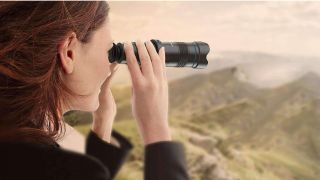
1. The list in brief ↴
2. Best super lightweight model
3. Best for ruggedness
4. Best premium monocular
5. Best for wildlife
6. Best for spectacles wearers
7. Best for magnification
8. Best for use with a smartphone
9. Best for moon observations
10. Best monocular FAQ
11. How we test
The best monocular can be a handy and portable way to view wildlife, birds or the night sky. While they may not be the first thing that comes to mind when you think of optical equipment, they can have several benefits over the best binoculars and the best telescopes.
As what is essentially half of a pair of binoculars, a monocular is a small, lightweight option for viewing distant objects that is pocket-sized and even more travel-friendly than a pair of the best compact binoculars.
They're also easy to use, requiring none of the technical knowledge needed to properly set up even one of the best beginner telescopes. This makes them perfect for a traveler on the move who wants to be able to whip out an observation device at a moment's notice when they spot something exciting in the distance.
Our reviewers have tried and tested a range of different monocular options to bring you a list of the very best.

Jamie is a Contributing Writer for Space.com and put together this guide. He is an experienced science, technology and travel journalist and stargazer who writes about exploring the night sky, solar and lunar eclipses, moon-gazing, astro-travel, astronomy and space exploration.
Jamie is the editor of WhenIsTheNextEclipse.com and author of A Stargazing Program For Beginners, and is a senior contributor at Forbes.
Quick list
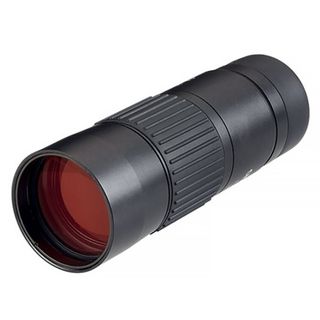
Best super lightweight model
Despite its low price, the wide-field ED optics use the most recent multi-coating technology, which results in plenty of contrast, clarity and a premium feel.
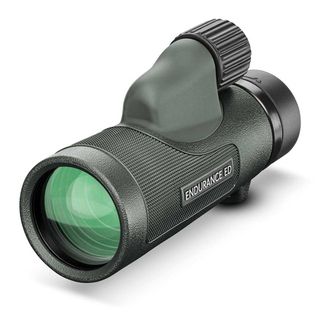
Best for ruggedness
This lightweight and waterproof monocular is ideal for observing in the wilderness. This monocular is made to survive the elements and has a waterproof chassis and strong grip armoring.
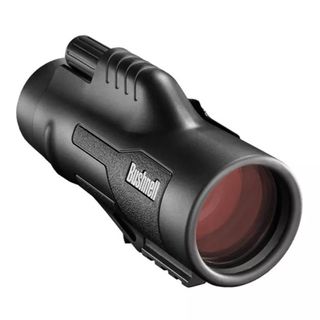
Best premium monocular
Boasting a 42mm objective lens and a 10x magnification, Bushnell's ED Prime HD glass, with its multi-coated and anti-reflective optics, provides clear and detailed views at just 13.2 oz.
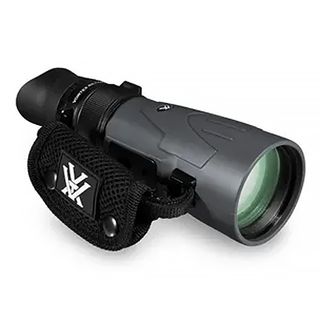
Best for wildlife
At 15x magnification, the Vortex Recon R/T 15x50 will give you a closer look at objects than your average monocular or pair of astronomy-centric binoculars.
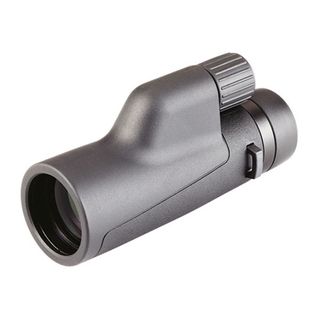
Best for spectacles wearers
This monocular has phase-corrected prism coatings and multi-coated optics to deliver clear, crisp views daily and in low light.
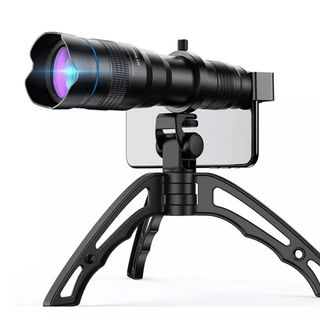
Best for magnification
Apexel 36x is a fixed optical zoom monocular that doubles as a smartphone lens for taking photos and videos of the Moon.
Load the next 2 products ↴
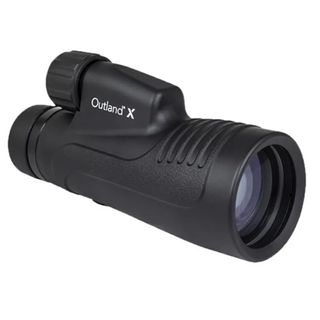
Best for use with a smartphone
The Celestron Outland X 10x50 monocular has a smartphone mount and could be considered an ideal digiscoping companion for those who want to image the night sky, especially the Moon.
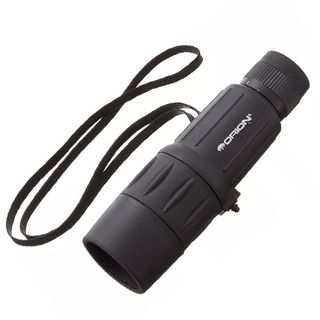
Best for moon observations
With a maximum of 25x magnification, this variable-magnification monocular is best suited to lunar viewing but can also focus on objects only 20 inches/50 cm away.
Best monocular we recommend in 2024
Why you can trust Space.com
Best super lightweight model
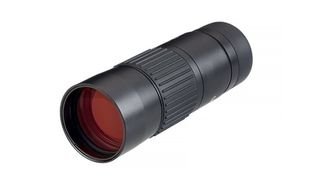
Opticron Explorer WA ED-R 8x42
Our expert review:
Specifications
Reasons to buy
Reasons to avoid
✅ You want a great all-rounder: It's affordable, lets plenty of light through, is compact and lightweight, good for beginners and stargazers, can withstand tough conditions and has excellent ED optics.
❌ You want high magnification: For zooming in on fine details, you'd likely want an instrument that has a higher magnification. A 10x variant of this model is available.
🔎 Opticron Explorer WA ED-R 8x42 A great all-rounder that boasts fantastic quality optics in a compact package at an affordable price. Perfect for wide-field observations and comfortable and easy to use. ★★★★
The Opticron Explorer WA ED-2 8x42 is a great monocular for beginners looking to engage in a bit of stargazing. The 42mm objective lens allows it to soak in a lot of light from distant stars and the 8x magnification is ideal for reducing wobbles and making it easier to focus in on objects.
This monocular would be excellent for outdoor activities of all kinds since it's highly portable, waterproof for up to three meters and nitrogen-filled to prevent fogging when transitioning between warm and cold environments. It also comes with a soft neoprene carry case which features rain guard, a padded strap and rubber lens covers to keep the glass free from scratches.
Glasses-wearers will benefit from the generous 17mm eye relief, and it even comes with a limited lifetime warranty, too. Overall, this is a reasonably-priced monocular with a wide-field view that is ideal for newcomers to astronomy who want to get their first look at the night sky.
Despite the affordable price, the optics on this monocular really are excellent. It features extra-low dispersion (ED) glass to reduce chromatic aberration and ensure accurate color rendition. The optics are also multi-coated, which helps them to produce an image with good contrast and clarity. All this makes it feel like a more premium product than the price would suggest.
- Check out the Best camera backpacks here
| Attributes | Notes |
|---|---|
| Design | Compact, lightweight and easily pocketable. |
| Performance | Top quality optics, durable |
| Functionality | 17mm eye relief. |
Best for ruggedness
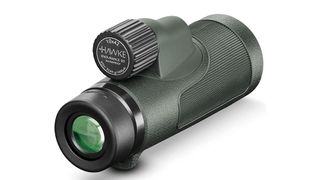
Hawke Endurance ED 10x42 monocular
Our expert review:
Specifications
Reasons to buy
Reasons to avoid
✅ You want to travel with it: It's lightweight and portable (although not small enough to fit into a pocket), making it a great option for observing wildlife or the night sky when out and about.
❌ You wear glasses: The eye relief is only 13mm, so if you wear eyeglasses you'd be wise to choose a different option.
🔎 Hawke Endurance ED 10x42 monocular Fantastic quality glass in a small and lightweight package, making it perfect for on-the-go observations. It's designed to withstand various weather conditions and comes with great quality accessories. ★★★★
With a rugged body, the Hawke Endurance ED 10x42 is the ideal monocular for traveling: This is a device made to withstand tough conditions without compromising on quality.
This monocular has special phase-corrected BaK-4 roof prisms, fully multi-coated lenses, and extra-low dispersion glass (ED). These features work together to let in as much light as possible and stop color fringing, giving you a super clear image with accurate colors. Overall, we think it makes for a really great viewing experience.
With its waterproof optics, you can use this monocular worry-free even in rough weather. Plus, it's nitrogen-purged to prevent fogging. And with its rubber casing, lens covers and lanyard, you're less likely to accidentally drop or misplace it.
With more than 350 reviews on Amazon, users like the portability, value and ease of use, scoring this monocular 4.5 out of 5 stars overall.
The main drawback is that the eye relief is only 13mm, so it wouldn't be a good choice if you wear glasses. But anyone else is likely to enjoy the convenient twist-up eyecup.
- Need a tripod? Have a look at our roundup of the Best tripods
| Attributes | Notes |
|---|---|
| Design | Lightweight, but too large for a pocket. |
| Performance | Excellent optics. |
| Functionality | Astro-centric specifications. |
Best premium monocular
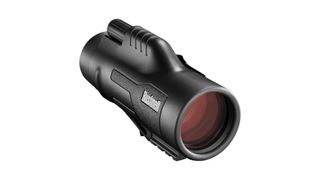
Bushnell Legend Ultra 10x42 monocular
Our expert review:
Specifications
Reasons to buy
Reasons to avoid
✅ You wear glasses: This model features twist-up eyecups which provide excellent eye relief if you wear glasses.
❌ You're on a budget: This is one of the more expensive products on our list, but you're getting excellent quality for that price.
🔎 Bushnell Legend Ultra 10x42 monocular Known for its impressive build quality, outstanding optics and valuable extras, it sets itself apart from the competition. ★★★★
A highly reputable brand, Bushnell have produced a monocular with exceptional build quality in the Bushnell Legend Ultra 10x42. The entire thing is housed in a black magnesium chassis with tactile, grippy sides and a strong in-built belt clip so you can keep it easily accessible when you're out and about.
This monocular is lightweight, coming in at only 13.2 oz (374g), but it still offers a 1/4-20 tripod adapter for if you need to mount it for longer viewing sessions. Bushnell have provided a flip-style lens cap for the front and rear lenses that attaches to a lanyard to stop it getting lost, along with a high-quality padded case with its own belt clip for storing it safely away when not in use.
The design is well thought-out, with a smooth focus knob that sits exactly where your index finger would naturally rest when operating the device one-handed. It's also fully waterproof with a Rainguard HD Hydrophobic Coating on the lenses to enable water to ball up and slip off quickly should you find yourself caught outside with it in the rain.
The optics on offer here are similarly impressive. It uses ED Prime fluorite glass and BaK-4 roof prisms to deliver clear and detailed views, and the optics are fully multi-coated and anti-reflective to ensure accurate color rendition and eliminate chromatic aberration. With a close focus of 6.6 ft (2.01m), you'll be able to zoom in on wildlife even in your backyard. While this is one of the priciest options on our list, we think the quality is worth every penny.
- Check out the latest Bushnell binocular deals
| Attributes | Notes |
|---|---|
| Design | Superb build quality. |
| Performance | Excellent optics. |
| Functionality | Good eye relief, remarkably lightweight given the optics. |
Best for wildlife
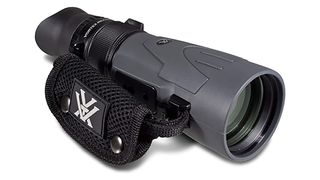
Vortex Recon R/T 15x50 monocular
Our expert review:
Specifications
Reasons to buy
Reasons to avoid
✅ You're a keen wildlife-watcher: If you have an invested interest in wildlife spotting and have the budget to put into a good monocular, this would be a fantastic option.
❌ You want something inexpensive: This model is definitely on the more expensive side, so if you're only a casual user then you'll want to look at another more budget-friendly monocular.
🔎 Vortex Recon R/T 15x50 monocular Though quite expensive, it provides an impressive 15x magnification, allowing you to see objects much closer than regular astronomy binoculars or monoculars. With its multi-coated extra-low dispersion glass, you can expect detailed and high-resolution images at long distances. ★★★★
While the Vortex Recon R/T 15x50 monocular wasn't primarily designed for wildlife-watching, it's still a great choice. It was built with field surveillance and range estimation in mind — but it's because of that, and its high 15x magnification, which makes it such a great choice for nature and skywatchers.
The standout feature of this monocular is its optics. With a 15x magnification, it lets you see objects up close, even more than regular binoculars. Plus, the multi-coated lenses and extra-low dispersion glass ensure really clear images, which is perfect for getting those detailed views of the moon.
However, this increased level of magnification comes with some drawbacks. Despite the substantial 50mm objective lens, this monocular may not provide as bright an image at night compared to, for example, an 8x magnification. Additionally, maintaining a steady hand is crucial to avoid a shaky image, but Vortex has thoughtfully included a screw thread for convenient tripod mounting, ensuring stable views.
The Vortex Recon R/T 15x50 is built tough, perfect for wildlife observation, especially outdoors with its waterproof design. It's got rubber armor on the outside for a good grip and comes with a rain/dust hood to protect the lens.
- Want to see more? Here are the Best telescopes for seeing planets
| Attributes | Notes |
|---|---|
| Design | Small exit pupil. |
| Performance | Not good in darkness. |
| Functionality | 15x magnification. |
Best for spectacles wearers
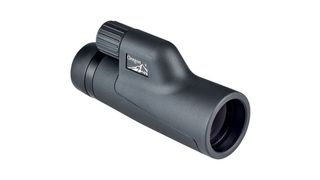
Opticron Oregon 4 PC 8x42 monocular
Our expert review:
Specifications
Reasons to buy
Reasons to avoid
✅ You want something weatherproof: It's waterproof and nitrogen-filled to eliminate fog, so it's a great, hardy option to use in any and all weather.
❌ You want to see fine details: Due to its wide field of view, we wouldn't recommend it for viewing close-ups of the Moon's craters.
🔎 Opticron Oregon 4 PC 8x42 monocular Good for general astronomy for sweeping across the sky, and produces sharp views during the day and in low light conditions. It was discontinued in 2022, so you may need to search the second-hand market to find one. ★★★½
The Opticron Oregon 4 PC 8x42 was officially discontinued in March 2022, but it's still easily accessible, which is why we are still happy to recommend it, especially for those who wear glasses. However, if you are considering getting one, it's advisable not to wait too long. Despite its discontinuation, a new purchase still comes with a five-year guarantee, so there's no need to be deterred by that.
We love that the Opticron Oregon 4 PC 8x42 is usable in almost all weather thanks to being waterproof and fog-proof (nitrogen-filled). Its body offers just enough texture to be gripped well in the hand, and it's small enough to put in your pocket as you travel.
This monocular is top-notch, designed with a roof prism for quality. Its multi-coated optics ensure clear and sharp views, perfect for stargazing at night or watching wildlife during the day.
The 8x magnification strikes a good balance between zoom and stability, and the 42mm objective lens lets in plenty of light for bright images.
- An Opticron fan? Have a look at these Opticron Adventurer II WP binoculars
| Attributes | Notes |
|---|---|
| Design | Generous eye relief. |
| Performance | Lacks magnification. |
| Functionality | Wide FOV. |
Best for magnification
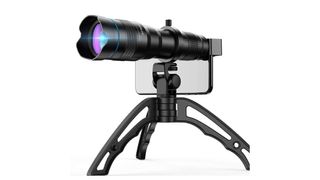
Apexel 36x super zoom monocular/smartphone lens
Our expert review:
Specifications
Reasons to buy
Reasons to avoid
✅ You're a content creator: This monocular is designed to attach to a smartphone, so would be best suited to those who create content with their smartphone.
❌ You want flexibility: This monocular has a fixed zoom, so it wouldn't be ideal for viewing moving objects where you may need to zoom in or out.
🔎 Apexel 36x super zoom monocular/smartphone lens: Think of it as a small telescope with a fixed zoom of 36x. When it comes to zooming in, using a clip-on lens with superior optics, such as this monocular made of BaK-4 glass with roof prisms, is a far superior option compared to digital zoom. ★★★½
The Apexel 36x super zoom is a multi-purpose lens that can be used as both a monocular and a telephoto lens for your smartphone camera. It's also one of the most affordable options on our list.
We were impressed by the optics of the Apexel 36x super zoom. It comes with BaK-4 glass and roof prisms, along with multi-coated lenses that reduce ghosting, reflections and lens flare. However, it's important to mention that while the fixed 36x magnification can capture decent images of the Moon, it won't completely fill the field of view, giving about 5.3 degrees of coverage.
Apexel offers a solution to the limitations of smartphone cameras that often suffer from degraded image quality with digital zoom. Their compact telescope attachment easily clips onto your smartphone lens, enabling you to capture high-quality photos and videos of distant objects. This proves endlessly useful for content creators, wildlife enthusiasts and anyone interested in shooting sports, concerts or celestial bodies like the moon.
You have the option to purchase it with a tripod in a bundle, but we found that the tripod isn't very sturdy, so, you might prefer to use your own instead. It doesn't have a built-in thread for the tripod, but it does have a metal adapter ring for one, and it also includes a small rubber eyepiece that can be used as a monocular. If you enjoy taking photos with your smartphone, this is a useful and adaptable piece of equipment.
- Pairing this with a smartphone? Check out our guide to the Best camera phones
| Attributes | Notes |
|---|---|
| Design | Clips onto a smartphone. |
| Performance | Easy to use. |
| Functionality | Fixed zoom. |
Best for use with a smartphone
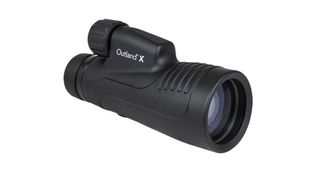
Celestron Outland X 10x50 monocular
Our expert review:
Specifications
Reasons to buy
Reasons to avoid
✅ You shoot with your smartphone: This monocular includes a smartphone attachment.
❌ You want lightweight and portable: It's fairly heavy weighing 14.6oz / 414g — so if you want one for portability, there are better options.
🔎 Celestron Outland X 10x50 monocular: This could be considered an ideal digiscoping companion with its astronomy-centric optics. For discovering and studying open star clusters, the Moon and the Milky Way, the 50mm objectives with 10x magnification are ideal. ★★★½
The Celestron Outland X 10x50 isn't only a monocular; it can also work with a camera for digiscoping. This means you can attach a camera to it to take pictures through its eyepiece, providing another option instead of using a separate zoom lens. Plus, it includes a smartphone mount, making it great for digiscoping with your phone.
This particular monocular has a 50mm objective lens and a 10x magnification, which makes it a great choice for observing the night sky. That level of magnification is ideal for studying open star clusters and getting great, detailed views of the moon.
Better yet, the Celestron Outland X 10x50 sports excellent-quality optics. It has BAK-4 glass prisms and multi-coated optics that offer sharp, clear views and minimized reflections.
It also has generous eye relief, making it a comfortable monocular choice for people who wear glasses.
| Attributes | Notes |
|---|---|
| Design | Relatively heavy. |
| Performance | Ideal for digiscoping. |
| Functionality | Fog and waterproof. |
Best for moon observations
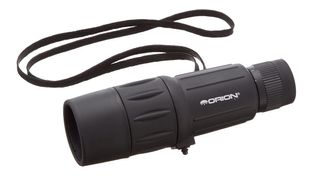
Orion 10-25x42 monocular
Our expert review:
Specifications
Reasons to buy
Reasons to avoid
✅ You want something affordable: If you want to view the Moon on a budget, this monocular would be ideal.
❌ You don't want to use a tripod: While they're certainly light enough to handhold, higher magnifications will require a tripod to prevent shaky views.
🔎 Orion 10-25x42 monocular You'll have no trouble getting a closer and clearer look at the details of the Moon's craters with this monocular. The 42mm objective aperture lens makes it versatile, allowing you to use it during the day, in low-light conditions or at night-time. ★★★½
The Orion 10-25x42 is a zoom monocular ideal for various purposes because of its adjustable magnification. With its larger 42mm objective lens, it lets in more light through the eyepiece, resulting in brighter and clearer views, whether it's day or night.
With its magnification range from 10x to 25x and excellent light-gathering abilities, this monocular is perfect for observing nature, wildlife and even celestial objects. It's especially handy for moon watching, allowing you to see its craters in fine detail. At 25x magnification, you can focus on objects as close as 20 inches (50cm) away.
The Orion 10-25x42 is a great, rugged monocular to take on the road. It's waterproof, and the rubberized body makes it pleasant to grip.
It also comes with a wrist strap so you don't have to fear dropping it while on your adventures, and a nylon case to keep it safe while not in use.
- Need something to keep your monocular stable? Check out our guide to the Best travel tripods
| Attributes | Notes |
|---|---|
| Design | Waterproof with a rubberized design. |
| Performance | Excellent for lunar viewing. |
| Functionality | Narrow FOV. |
Best monocular Frequently Asked Questions
What is the best monocular for stargazing?
If you're after a monocular for stargazing, we'd recommend either the Vortex Recon R/T 15x50 or the Celestron Outland X 10x50. Their larger, 50mm objective lenses mean more light can pass through the eyepiece, which is perfect for skywatching in low light environments.
Which monocular features are important?
There are a few important features to consider when choosing a monocular. First, as you'll be taking it outside plenty, try to find one with good water- and fog-proofing. The cold air exposure after it's been stashed in your bag or pocket will mean fogging up can be an issue.
If you're after a high-tech option that can take photos, you can find models with built-in image capture features, while others come with smartphone mounts or built-in tripod mounts for 'digiscoping'.
What is the best monocular for birdwatching?
If birdwatching is your passion, you can't do much better than the Vortex Recon R/T 15x50 monocular. Its impressive 15x magnification means you can zoom into really distant subjects, and the wide 50mm objective lens enables you to see even in twilight. The Orion 10-25x42 and Olivon 8-24x40 zoom monoculars are also great options with flexible zoom amounts.
How we test the best monocular
To guarantee you're getting honest, up-to-date recommendations on the best monocular to buy here at Space.com, we make sure to put every monocular through a rigorous review to test each instrument thoroughly. Each monocular is reviewed based on many aspects, from its construction and design, to how well it functions as an optical instrument and performs in the field.
Each monocular is carefully tested by our expert staff or knowledgeable freelance contributors who know their subject areas in depth. This ensures fair reviewing is backed by personal, hands-on experience with each monocular and is judged based on its price point, class and destined use.
We look at how easy it is to set up, and whether it comes with appropriate accessories. We suggest if a particular monocular would benefit from any additional equipment to give you the best viewing experience possible.
With complete editorial independence, Space.com are here to ensure you get the best buying advice on monoculars, whether you should purchase an instrument or not, making our buying guides and reviews reliable and transparent.
Join our Space Forums to keep talking space on the latest missions, night sky and more! And if you have a news tip, correction or comment, let us know at: community@space.com.
Get the Space.com Newsletter
Breaking space news, the latest updates on rocket launches, skywatching events and more!

Jamie is an experienced science, technology and travel journalist and stargazer who writes about exploring the night sky, solar and lunar eclipses, moon-gazing, astro-travel, astronomy and space exploration. He is the editor of WhenIsTheNextEclipse.com and author of A Stargazing Program For Beginners, and is a senior contributor at Forbes. His special skill is turning tech-babble into plain English.
- Kimberley LaneContributing writer
- Tantse WalterContributing Writer
- Kimberley SnaithFreelance contributor
